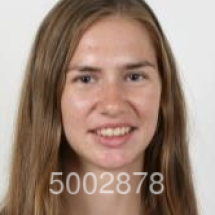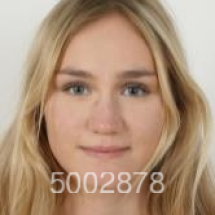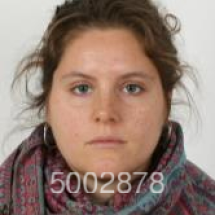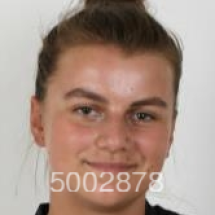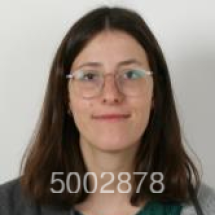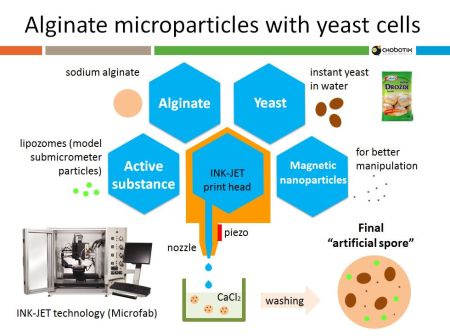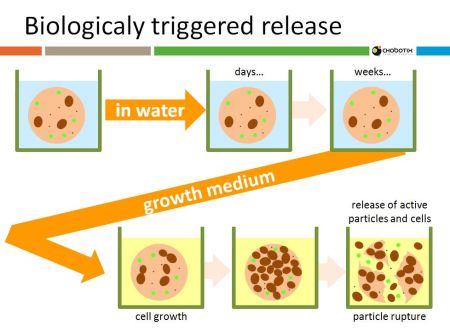The Droplet Laboratory was established by Jitka Čejková in 2017 as part of the Chemical Robotics Laboratory at Chemical Engineering Department. Our research is focused on droplets, namely on life-like decanol droplets behavior and liquid marbles.
stdClass Object
(
[nazev] => Droplet laboratory
[adresa_url] =>
[api_hash] =>
[seo_desc] => Droplet laboratory
[jazyk] => en
[jednojazycny] => 1
[barva] => modra
[indexace] => 1
[obrazek] =>
[ga_force] =>
[cookie_force] =>
[secureredirect] =>
[google_verification] => UOa3DCAUaJJ2C3MuUhI9eR1T9ZNzenZfHPQN4wupOE8
[ga_account] => UA-10822215-5
[ga_domain] =>
[ga4_account] =>
[gtm_id] =>
[gt_code] =>
[kontrola_pred] =>
[omezeni] => 0
[pozadi1] =>
[pozadi2] =>
[pozadi3] =>
[pozadi4] =>
[pozadi5] =>
[robots] =>
[htmlheaders] =>
[newurl_domain] => 'droplets.vscht.cz'
[newurl_jazyk] => 'en'
[newurl_akce] => '[en]'
[newurl_iduzel] =>
[newurl_path] => 8549/40012/40014
[newurl_path_link] => Odkaz na newurlCMS
[iduzel] => 40014
[platne_od] => 29.10.2021 17:01:00
[zmeneno_cas] => 29.10.2021 17:02:08.2751
[zmeneno_uzivatel_jmeno] => Jitka Čejková
[canonical_url] =>
[idvazba] => 42634
[cms_time] => 1713460682
[skupina_www] => Array
(
)
[slovnik] => stdClass Object
(
[preloader] => Please wait...
[logo_href] => /
[logo] =>  [logo_mobile_href] => /
[logo_mobile] =>
[logo_mobile_href] => /
[logo_mobile] =>  [google_search] =>
[social_fb_odkaz] =>
[social_tw_odkaz] =>
[social_yt_odkaz] =>
[intranet_odkaz] =>
[intranet_text] =>
[mobile_over_nadpis_menu] =>
[mobile_over_nadpis_search] =>
[mobile_over_nadpis_jazyky] => languages
[mobile_over_nadpis_login] => login
[menu_home] => Homepage
[paticka_mapa_odkaz] =>
[paticka_budova_a_nadpis] => BUILDING A
[paticka_budova_a_popis] => Rector,
Department of Communications,
Department of Education,
FCT Dean’s Office,
Centre for Information Services
[paticka_budova_b_nadpis] => BUILDING B
[paticka_budova_b_popis] => Department of R&D, Dean’s Offices:
FET,
FFBT,
FCE,
Computer Centre,
Department of International Relations,
Bursar
[paticka_budova_c_nadpis] => BUILDING C
[paticka_budova_c_popis] => Crèche Zkumavka,
General Practitioner,
Department of Economics and Management,
Department of Mathematics
[paticka_budova_1_nadpis] => NATIONAL LIBRARY OF TECHNOLOGY
[paticka_budova_1_popis] =>
[paticka_budova_2_nadpis] => CAFÉ CARBON
[paticka_budova_2_popis] =>
[paticka_adresa] => UCT Prague
[google_search] =>
[social_fb_odkaz] =>
[social_tw_odkaz] =>
[social_yt_odkaz] =>
[intranet_odkaz] =>
[intranet_text] =>
[mobile_over_nadpis_menu] =>
[mobile_over_nadpis_search] =>
[mobile_over_nadpis_jazyky] => languages
[mobile_over_nadpis_login] => login
[menu_home] => Homepage
[paticka_mapa_odkaz] =>
[paticka_budova_a_nadpis] => BUILDING A
[paticka_budova_a_popis] => Rector,
Department of Communications,
Department of Education,
FCT Dean’s Office,
Centre for Information Services
[paticka_budova_b_nadpis] => BUILDING B
[paticka_budova_b_popis] => Department of R&D, Dean’s Offices:
FET,
FFBT,
FCE,
Computer Centre,
Department of International Relations,
Bursar
[paticka_budova_c_nadpis] => BUILDING C
[paticka_budova_c_popis] => Crèche Zkumavka,
General Practitioner,
Department of Economics and Management,
Department of Mathematics
[paticka_budova_1_nadpis] => NATIONAL LIBRARY OF TECHNOLOGY
[paticka_budova_1_popis] =>
[paticka_budova_2_nadpis] => CAFÉ CARBON
[paticka_budova_2_popis] =>
[paticka_adresa] => UCT Prague
Technická 5
166 28 Prague 6 – Dejvice
IČO: 60461373 / VAT: CZ60461373
Czech Post certified digital mail code: sp4j9ch
Copyright: UCT Prague 2017
Information provided by the Department of International Relations and the Department of R&D. Technical support by the Computing Centre.
[paticka_odkaz_mail] => mailto:cejkovaj@vscht.cz
[zobraz_desktop_verzi] => switch to desktop version
[social_fb_title] =>
[social_tw_title] =>
[social_yt_title] =>
[aktualizovano] => Updated
[autor] => Author
[drobecky] => You are here:
[more_info] =>
[archiv_novinek] =>
[zobraz_mobilni_verzi] =>
[nepodporovany_prohlizec] =>
[social_in_odkaz] =>
[social_li_odkaz] =>
[den_kratky_5] =>
[novinky_servis_archiv_rok] =>
[novinky_kategorie_1] =>
[novinky_kategorie_2] =>
[novinky_kategorie_3] =>
[novinky_kategorie_4] =>
[novinky_kategorie_5] =>
[novinky_archiv_url] =>
[novinky_servis_nadpis] =>
[novinky_dalsi] =>
[den_kratky_3] =>
[den_kratky_6] =>
[den_kratky_1] =>
[den_kratky_4] =>
[hledani_nadpis] => hledání
[hledani_nenalezeno] => Nenalezeno...
[hledani_vyhledat_google] => vyhledat pomocí Google
[den_kratky_0] =>
[den_kratky_2] =>
)
[poduzel] => stdClass Object
(
[40101] => stdClass Object
(
[obsah] =>
[poduzel] => stdClass Object
(
[40102] => stdClass Object
(
[obsah] =>
[iduzel] => 40102
[canonical_url] => //droplets.vscht.cz
[skupina_www] => Array
(
)
[url] => /[menu-main]
[sablona] => stdClass Object
(
[class] => api_html
[html] =>
[css] =>
[js] =>
[autonomni] => 1
)
)
[40103] => stdClass Object
(
[obsah] =>
[iduzel] => 40103
[canonical_url] => //droplets.vscht.cz
[skupina_www] => Array
(
)
[url] => /[menu-top]
[sablona] => stdClass Object
(
[class] => api_html
[html] =>
[css] =>
[js] =>
[autonomni] => 1
)
)
[40104] => stdClass Object
(
[obsah] =>
[iduzel] => 40104
[canonical_url] => //droplets.vscht.cz
[skupina_www] => Array
(
)
[url] => /[menu-jazyky]
[sablona] => stdClass Object
(
[class] => api_html
[html] =>
[css] =>
[js] =>
[autonomni] => 1
)
)
)
[iduzel] => 40101
[canonical_url] => //droplets.vscht.cz/40101
[skupina_www] => Array
(
)
[url] => /[en]/40101
[sablona] => stdClass Object
(
[class] => api_html
[html] =>
[css] =>
[js] =>
[autonomni] => 1
)
)
[40107] => stdClass Object
(
[obsah] =>
[poduzel] => stdClass Object
(
[40108] => stdClass Object
(
[nazev] =>
[seo_title] => home
[seo_desc] =>
[autor] =>
[autor_email] =>
[obsah] => Welcome to Droplet Laboratory website!
The Droplet Laboratory was established by Jitka Čejková in 2017 as part of the Chemical Robotics Laboratory at Chemical Engineering Department (University of Chemistry and Technology Prague). Our research is focused on droplets, namely on life-like decanol droplets behavior and liquid marbles. Find out more about our research interests.
Want to join us?
We are always looking for motivated students at all levels – from 1st year undergraduate to PhD’s – to join our lab! Interested candidates, please apply directly to Jitka Čejková.
[urlnadstranka] =>
[ogobrazek] =>
[pozadi] =>
[iduzel] => 40108
[canonical_url] =>
[skupina_www] => Array
(
)
[url] => /home
[sablona] => stdClass Object
(
[class] => stranka_novinky
[html] =>
[css] =>
[js] =>
[autonomni] => 1
)
)
[41231] => stdClass Object
(
[nazev] => Research
[seo_title] => Research
[seo_desc] =>
[autor] =>
[autor_email] =>
[obsah] =>
[iduzel] => 41231
[canonical_url] =>
[skupina_www] => Array
(
)
[url] => /research
[sablona] => stdClass Object
(
[class] => boxy
[html] =>
[css] =>
[js] => $(function() {
setInterval(function () { $('*[data-countdown]').each(function() { CountDownIt('#'+$(this).attr("id")); }); },1000);
setInterval(function () { $('.homebox_slider:not(.stop)').each(function () { slide($(this),true); }); },5000);
});
function CountDownIt(selector) {
var el=$(selector);foo = new Date;
var unixtime = el.attr('data-countdown')*1-parseInt(foo.getTime() / 1000); if(unixtime<0) unixtime=0;
var dnu = 1*parseInt(unixtime / (3600*24)); unixtime=unixtime-(dnu*(3600*24));
var hodin = 1*parseInt(unixtime / (3600)); unixtime=unixtime-(hodin*(3600));
var minut = 1*parseInt(unixtime / (60)); unixtime=unixtime-(minut*(60));
if(unixtime<10) {unixtime='0'+unixtime;}
if(dnu<10) {unixtime='0'+dnu;}
if(hodin<10) {unixtime='0'+hodin;}
if(minut<10) {unixtime='0'+minut;}
el.html(dnu+':'+hodin+':'+minut+':'+unixtime);
}
function slide(el,vlevo) {
if(el.length<1) return false; var leva=el.find('.content').position().left; var sirka=el.width(); var pocet=el.find('.content .homebox').length-1;
var cislo=leva/sirka*-1; if(vlevo) { if(cislo+1>pocet) cislo=0; else cislo++; } else { if(cislo==0) cislo=pocet-1; else cislo--; }
el.find('.content').animate({'left':-1*cislo*sirka});
el.find('.slider_puntiky a').removeClass('selected');
el.find('.slider_puntiky a.puntik'+cislo).addClass('selected');
return false;
}
function slideTo(el,cislo) {
if(el.length<1) return false; var sirka=el.width(); var pocet=el.find('.content .homebox').length-1; if(cislo<0 || cislo>pocet) return false;
el.find('.content').animate({'left':-1*cislo*sirka});
el.find('.slider_puntiky a').removeClass('selected');
el.find('.slider_puntiky a.puntik'+cislo).addClass('selected');
return false;
}
[autonomni] => 1
)
)
[41228] => stdClass Object
(
[nazev] => Towards the understanding of evaporation induced pattern formation of decanol droplets
[seo_title] => GAČR
[seo_desc] =>
[autor] =>
[autor_email] =>
[perex] =>
[ikona] =>
[obrazek] =>
[obsah] => Funding:
Project Registration No.
17-21696Y
Abstract:
Pattern formation in far from equilibrium systems is observed in several disciplines including biology and reaction-diffusion chemistry, comprising both living and non-living systems. We aim to study such non-equilibrium dynamics of a novel system based on a 1-decanol droplet placed in a solution of alkaline decanoate. Recently, we have found that when the system is open to the environment and the evaporation of water from decanoate solution occurs we observe dramatic morphological changes of the decanol droplet. Moreover in the presence of sodium chloride it shows a novel type of pattern formation, namely the formation of long tentacular structures that we aim to analyse within present project at both the macroscopic and microscopic scale across a large range of initial conditions. Such reproducible morphological changes in simple droplets open a path for exploration of shape-based effects in larger scale pattern formation studies.
Start date:
2017-01-01
End date:
2019-12-31
[iduzel] => 41228
[canonical_url] =>
[skupina_www] => Array
(
)
[url] => /gacr
[sablona] => stdClass Object
(
[class] => stranka_submenu
[html] =>
[css] =>
[js] =>
[autonomni] => 1
)
)
[40273] => stdClass Object
(
[nazev] => People
[seo_title] => People
[seo_desc] =>
[autor] =>
[autor_email] =>
[obsah] => Head of the Droplet Laboratory
|
|
Doc. Ing. Jitka Čejková, Ph.D. |
Students
|
|
Laura Bábanová
|
|
|
Nina Nováková
|
|
|
Eliška Paulíková
|
|
|
Simona Staňová
|
|
|
Amandine St-Hilaire
|
 |
Jakub Vaculík
|
Alumni
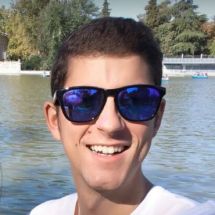 |
Andoni Aguirre
|
|
|
Adriana Augustínová
|
|
|
Vojtěch Blahušek
|
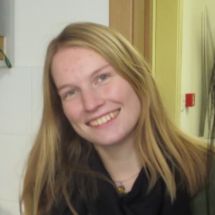 |
Linda Bondorf
|
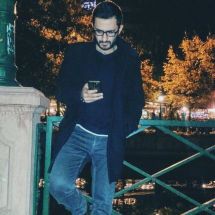 |
Barış Çınar
|
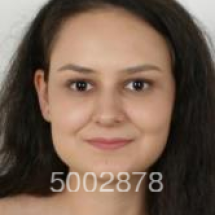 |
Ecaterina Laura Cioban
|
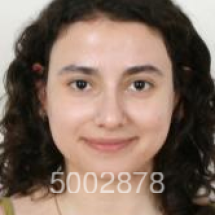 |
Aygun Gasimova
|
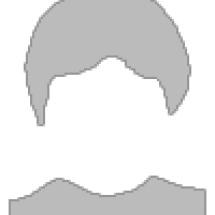 |
Radek Chmelař
|
 |
Megan Jack
|
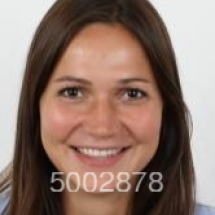 |
Petra Janská
|
 |
Ilgın Karakoç
|
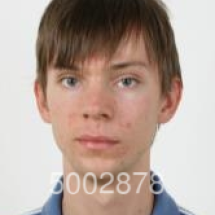 |
Fillip Keller
|
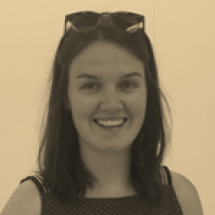 |
Markéta Kubiková
|
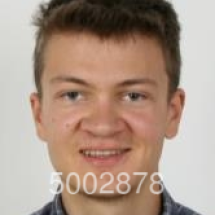 |
Mathis Leemann
|
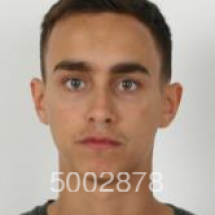 |
George Loustas
|
 |
To Quyen Nguyenová
|
|
|
Theresa Noske
|
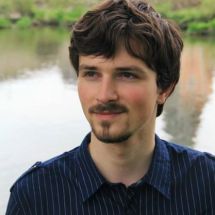 |
Matěj Novák
|
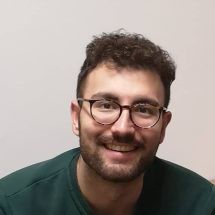
|
Ioannis Pantazos
|
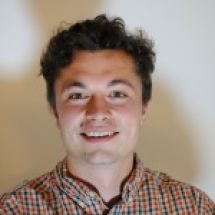 |
Ondřej Rychecký
|
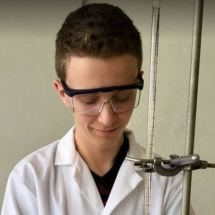 |
Adam Sikorják
|
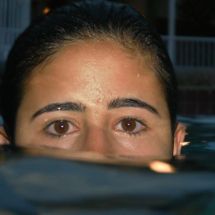 |
Sara Patricia Ferreira Da Silva
|
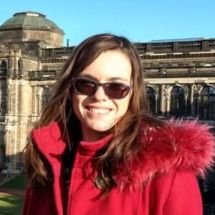 |
Jana Steinhauserová
|
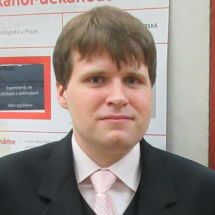 |
Dominik Švára
|
 |
Dorota Marie Walecka
|
Collaborators
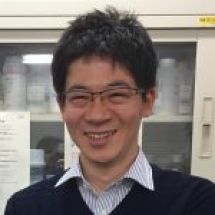 |
Taisuke Banno
|
 |
Martin M. Hanczyc
|
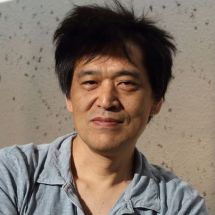 |
Takashi Ikegami
|
 |
Karin Schwarzenberger
|
 |
Kasper Stoy
|
 |
František Štěpánek
|
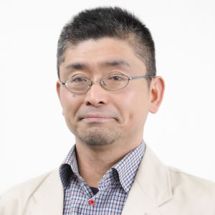 |
Shinpei Tanaka
|
*alphabetical order in all lists
[urlnadstranka] => [ogobrazek] => [pozadi] => [iduzel] => 40273 [canonical_url] => [skupina_www] => Array ( ) [url] => /people [sablona] => stdClass Object ( [class] => stranka [html] => [css] => [js] => [autonomni] => 1 ) ) [40274] => stdClass Object ( [nazev] => Links [seo_title] => Links [seo_desc] => [autor] => [autor_email] => [obsah] =>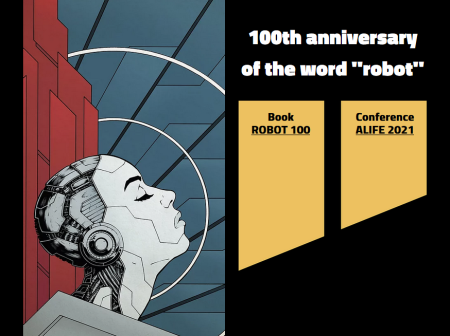 |
ROBOT 100On the occasion of 100th anniversary of the word "robot", I published the book ROBOT 100 and organized a conference on artificial life ALIFE 2021 in Prague |
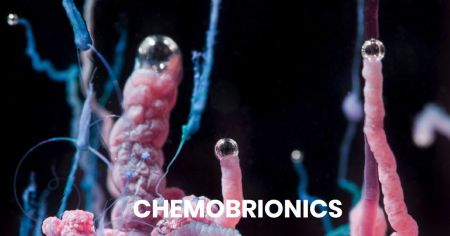 |
ChemobrionicsCOST Action where we are involved in |
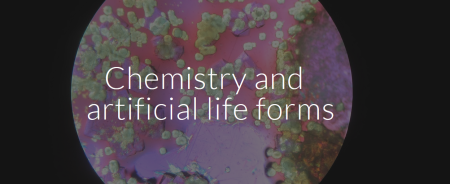 |
CHEMALIFORMSWorkshop at ALIFE 2019 Newcastle (UK) 29 Jul 2019 organized by Jitka Čejková, Richard Löffler and Geoff Cooper |
Publications
- Cartwright J.H.E., Čejková J. et al. (2024). Information, Coding, and Biological Function: the Dynamics of Life, Artificial Life 30(1) (in press, doi: 10.1162/artl_a_00432)
- Čejková J., Holler S., Löffler R., Witkowski O. (2022). Editorial Introduction to the 2021 Conference on Artificial Life Special Issue, Artificial Life 28 (4): 397–400.
- Čejková J. (2022). O Fakultě chemicko-inženýrské, Chemické listy 116(10), 574–580.
- Čejková J., Cartwright J. H. E. (2022). Chemobrionics and Systems Chemistry, ChemSystemsChem (Guest Editorial).
- McGachy L., Heyda J., Tomas J., Čejková J. (2021). Decanol Pattern Formation over a Sessile Aqueous Decanoate Droplet, Colloids and Surfaces A: Physicochemical and Engineering Aspects 621, 126541.
- Becherová L., Prokopec V., Čejková J. (2021). Vibrational spectroscopic analysis of critical micelle concentration in sodium decanoate solutions, Spectrochimica Acta Part A: Molecular and Biomolecular Spectroscopy 250, 119387.
- Cardoso S. S. S., Cartwright J. H. E., Čejková J., Cronin L., Wit A. D., Giannerini S., Horváth D., Rodrigues A., Russell M. J., Sainz-Díaz C. I., Tóth Á. (2020), Chemobrionics: From Self-assembled Material Architectures to the Origin of Life, Artificial Life 26(3), 315-326 (open access).
- Janská P., Rychecký O., Zadražil A., Štěpánek F., Čejková J. (2019), Liquid oil marbles: increasing the bio-availability of poorly water-soluble drugs, Journal of Pharmaceutical Sciences, 108(6), 2136-2142.
- Čejková J., Schwarzenberger K., Eckert K., Tanaka S. (2019), Dancing performance of organic droplets in aqueous surfactant solutions. Colloids and Surfaces A: Physicochemical and Engineering Aspects, 566, 141-147.
- Čejková J., Hanczyc M.M., Štěpánek F. (2018), Multi-Armed Droplets as Shape-Changing Protocells, Artificial Life, 24 (1), 71-79.
- Čejková J., Banno T., Štěpánek F., Hanczyc M.M. (2017), Droplets as Liquid Robots, Artificial Life, 23 (4), 528-549 (open access).
- Čejková J., Rychecký O. (2017), Tekuté kuličky, Chemické listy 111, 109-114.
- Rychecký O., Majerská M., Král V., Štěpánek F., Čejková J. (2017), Spheroid cultivation of HT-29 carcinoma cell line in liquid marbles, Chemical Papers 71(6), 1055–1063.
- Čejková J., Štěpánek F., Hanczyc M. (2016), Evaporation-induced pattern formation of decanol droplets, Langmuir 32, 4800-4805.
- Čejková J., Novák M., Štěpánek F., Hanczyc M. (2014), Dynamics of chemotactic droplets in salt concentration gradients, Langmuir ,30(40), 11937–11944.
- Čejková J., Haufová P., Gorný D., Hanuš J., Štěpánek F. (2013), Biologically triggered liberation of sub-micron particles from alginate microcapsules, Journal of Materials Chemistry B 1, 5456-5461.
- Čejková J. (2013), Dictyostelium discoideum – model system not only for biologists, Chemické listy 107, 563-600.
- Čejková J., Štěpánek F. (2013), Compartmentalized and internally structured particles for drug delivery, Current Pharmaceutical Design 19(35), 6298-6314.
- Prokopec V., Kokaislová A., Čejková J., Dendisová M., Člupek M., Matějka P. (2011), Spectroscopic study of SERS- and SEIRA- activity of copper large-scaled surface substrates prepared by electrochemical deposition: what is the role of oxidation-reduction cycle treatment?, Journal of Molecular Structure 993, 410-419.
- Čejková J., Hanuš J., Štěpánek F. (2010), Investigation of internal microstructure and thermo-responsive properties of composite PNIPAM/silica microcapsules. Journal of Colloid and Interface Science 346, 352-360.
- Ševčíková H., Čejková J., Krausová L., Přibyl M., Štěpánek F., Marek M. (2010) A new traveling wave pattern of Dictyostelium in the presence of cAMP in the agar. Physica D 239, 879-888.
- Čejková J., Prokopec V., Brázdová S., Kokaislová A., Matějka P., Štěpánek F. (2009), Characterization of copper SERS-active substrates prepared by electrochemical deposition. Applied Surface Science 255, 7864-7870.
- Kokaislová A., Brázdová S., Prokopec V., Člupek M., Čejková J., Matějka P. (2009), Příprava SERS-aktivních měděných substrátů katodickou redukcí a vyhodnocení jejich struktury pomocí mikroskopie atomárních sil. Chemické listy 103, 246-250.
- Hilgardt C., Čejková J., Hauser M. J. B., Ševčíková H. (2008), Streamless aggregation of Dictyostelium in the presence of isopropylidenadenosin. Biophysical Chemistry 132, 9-17.
- Prokopec V., Čejková J., Matějka P., Hasal P. (2008), Preparation of SERS-active substrates with large surface area for Raman spectral mapping and testing of their surface nanostructure. Surface and Interface Analysis 40, 601-607.
Book Chapters
- Bassereau P., Cangelosi A., Čejková J., Gershenson C., Goldstein R., Martins Z., S., F., Westall F. (2024). Physics for understanding life. In EPS Grand Challenges: Physics for Society in the Horizon 2050. IOP Publishing.
- Čejková J., Nguyenová T.Q., Štěpánek F. “Chemotactic droplets serving as chemo-taxi”. In “Self-Organized Motion: Physiochemical Design based on Nonlinear Dynamics”, (Nakata S., Pimienta V., Lagzi I., Kitahata H., Suematsu N.J., eds.), Royal Society of Chemistry, pp. 182-203 (2019).
- Čejková J., Tóth R., Braun A., Ueyama D., Lagzi I. "Shortest path finding in mazes by active and passive particles". In „Shortest path. Parallel and distributed solvers“ (Adamatzky A., ed.), Springer, pp. 401-408 (2018).
- Čejková J., Holler S., Nguyenová T.Q., Kerrigan C., Štěpánek F., Hanczyc, M. M. “Chemotaxis and chemokinesis of living and non-living objects” In Advances in Unconventional Computing, Volume 2: Prototypes, Models and Algorithms, (Adamatzky A., ed.) Springer, pp. 245-260 (2016).
Proceedings
(selected from over 40 papers)
- Čejková J., Robots: The century past and the century ahead, an Introduction to the 2021 ALIFE conference, Artificial Life Conference Proceedings, MIT Press, 2021.
- Čejková J., Ikegami T., Experimental study of mutual interactions of multiple liquid droplets, Proceedings of the 2nd International Symposium on Swarm Behavior and Bio-Inspired Robotics, Kyoto (Japan), 31. 10. -1. 11. 2017, pp. 274-278 (2017).
- Čejková J., Ikegami T., Štěpánek F., Life-like swarm behavior of multiple chemotactic droplets, Proceedings of the European Conference on Artificial Life 2017, Lyon (France), 4. – 9. 9. 2017, MIT Press, pp. 91-95 (2017).
- Čejková J., Haufová P., Gorný D., Štěpánek F.: “Artificial spores” – hybrid alginate microcapsules with encapsulated yeast cells, Proceedings of the Twelfth European Conference on the Synthesis and Simulation of Living Systems, Taormina (Italy), 2. -6. 9. 2013, MIT Press, pp. 818-823 (2013).
- Čejková J., Štěpánek F.: Chobotix 2012: book of proceedings, Institute of Chemical Technology Prague, 2012, ISBN 978-80-7080-813-9 (editor).
DATA
stdClass Object
(
[nazev] => Research
[seo_title] => Research
[seo_desc] =>
[autor] =>
[autor_email] =>
[obsah] =>
[submenuno] =>
[urlnadstranka] =>
[ogobrazek] =>
[pozadi] =>
[newurl_domain] => 'droplets.vscht.cz'
[newurl_jazyk] => 'en'
[newurl_akce] => '/research'
[newurl_iduzel] => 41231
[newurl_path] => 8549/40012/40014/40107/41231
[newurl_path_link] => Odkaz na newurlCMS
[iduzel] => 41231
[platne_od] => 14.11.2017 19:31:00
[zmeneno_cas] => 14.11.2017 19:31:34.585055
[zmeneno_uzivatel_jmeno] => Jitka Čejková
[canonical_url] =>
[idvazba] => 44416
[cms_time] => 1713463489
[skupina_www] => Array
(
)
[slovnik] => Array
(
)
[poduzel] => stdClass Object
(
[61421] => stdClass Object
(
[nazev] => About us
[barva_pozadi] => cervena
[uslideru] => false
[text] => The Droplet Laboratory was established by Jitka Čejková in 2017 as part of the Chemical Robotics Laboratory at Chemical Engineering Department. Our research is focused on droplets, namely on life-like decanol droplets behavior and liquid marbles.
[poduzel] => Array
(
)
[iduzel] => 61421
[canonical_url] =>
[skupina_www] => Array
(
)
[url] =>
[sablona] => stdClass Object
(
[class] => infobox
[html] =>
[css] =>
[js] =>
[autonomni] => 0
)
)
[61436] => stdClass Object
(
[nazev] => Chemobrionics
[seo_title] => Chemobrionics
[seo_desc] =>
[autor] =>
[autor_email] =>
[obsah] => Student Mathis Leemann from Switzerland made in collaboration with Jitka Čejková and Jan Havlík a short film titled "Chemobrionics". This film had a world premiere at the 25th Ji.hlava International Documentary Film Festival in the section Fascinations: Exprmntl.cz.
"If you have a garden and a library, you have everything you need."
The subtitle of this 5-min length audio-visual chemobrionics-related project is a quotation by Cicero and it was chosen with the aim to show, that in the same way as Roman garden was designed for thinking, philosophizing and discourse, the chemical gardens can also open the door to philosophical questions such as what life is and how it originated, how we distinguish the biological systems from their chemical counterparts. Our video focuses on showing the beauty of silicate chemical gardens composed of plant-like tubular structures made of metal salts placed in a water glass. The viewer is be puzzled by the hypnotic slow growth of the structures and the manifold of colors they can produce. Tiny aerial air bubbles, flowing inner solutions, thick and alien-like structures changing colors let the audience perplexed, dreamy, wondering why nature is presenting such delightful sight. Furthermore, extracts of Doctor Faustus by Thomas Mann, The Origin of Life by John Desmond Bernal and Mechanism of life by Stéphane Leduc are added to deepen the experience. The inspiration for this audio background was taken from Julyan Cartwright’s works focused on the chemical gardens, their history and mentions in the literature.
Director and producer: Jitka Čejková
Editor: Mathis Leemann
Camera operator: Mathis Leemann, Jan Havlík
Experiments: Mathis Leemann, Jan Havlík, Saniya Ustunn
Voice: Declan Garvey
Music: Chopin - Raindrop Prelude (Op. 28 No. 15), performed by Petr Mazúr
This film is based upon work from COST Action CA17120, supported by COST (European Cooperation in Science and Technology). COST is a funding agency for research and innovation networks. Our Actions help connect research initiatives across Europe and enable scientists to grow their ideas by sharing them with their peers. This boosts their research, career and innovation.
[urlnadstranka] =>
[ogobrazek] =>
[pozadi] =>
[poduzel] => stdClass Object
(
[61443] => stdClass Object
(
[nazev] => Research
[barva_pozadi] => cervena
[uslideru] => false
[text] => - Artificial chemotaxis
- Chemobrionics
- Collective behaviour
- Liquid marbles
- Liquid robots
- Pattern formation
We are always looking for motivated students at all levels – from 1st year undergraduate to PhD’s – to join our lab! Interested candidates, please apply directly to Jitka Čejková.
[poduzel] => Array ( ) [iduzel] => 61419 [canonical_url] => _clone_ [skupina_www] => Array ( ) [url] => [sablona] => stdClass Object ( [class] => infobox [html] => [css] => [js] => [autonomni] => 0 ) ) [41414] => stdClass Object ( [nazev] => KAPKY [seo_title] => KAPKY [seo_desc] => [autor] => [autor_email] => [obsah] =>KAPKY (audio-video alife-based art)
Jitka Čejková* and Simon Hickinbotham**
*Chemical Robotics Laboratory, University of Chemistry and Technology Prague, Technická 3, 166 28 Prague 6, Czechia
**York Cross-disciplinary Centre for Systems Analysis, University of York, Heslington, York, YO10 5GE, UK
World premiere: Ji.hlava International Documentary Film Festival
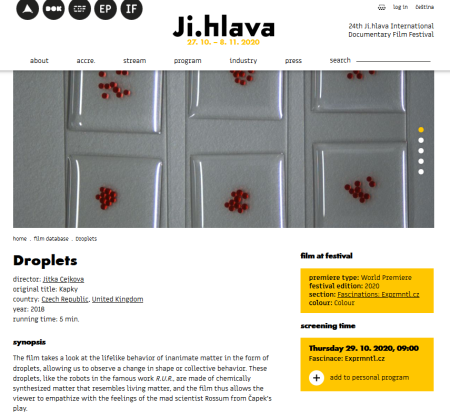
Introduction
Čapek’s science-fiction work R.U.R. is about a mad scientist Rossum that attempted by chemical synthesis to imitate the living matter known as protoplasm until he suddenly discovered a substance which behaved exactly like living matter although its chemical composition was different.
…this is what he wrote down in his chemical notes: “Nature has found only one way of organising living matter. There is however another way which is simpler […] This other path along which life might have developed is what I have just discovered.” Just think: he wrote these words about a blob of some kind of colloidal jelly that not even a dog would eat. Imagine him sitting with a test tube and thinking about how it could grow out into an entire tree of life made of all the animals starting with a tiny rotifers and ending with … ending with man himself. Man made of different material than we are… (Čapek, 1920)
The relevance of these statements to Artificial Life is obvious. If you want to empathize with Rossum, watch our audio-video art work titled “Kapky”. We believe that you will be as fascinated as we are when observing the life-like behaviour of non-living matter. Our artificial life research focuses on experimental study of droplets (in Czech “Kapky”) and our movie shows several life-like properties of these droplets including shape changes (Čejková et al., 2016), chemotaxis (Čejková et al., 2014), or collective behaviour (Čejková and Ikegami, 2017). We started to call these intriguing droplets as chemical (or liquid) robots (Čejková et al., 2017).
As we approach the 100th anniversary of Čapek’s play, Artificial Life is still concerned with the science, creativity and ethical considerations that these ideas raise. Our movie aims to pay tribute to these pioneering ideas, and to show new ways that they can be used to make art.
Video
All the experiments presented in this movie were performed by Jitka Čejková. The system consists of sodium decanoate aqueous solution as the continuous phase, and decanol droplets (coloured with Oil red O) as the disperse phase. In some cases NaCl was added. The experiments were performed on microscopic glass slides, cover slips of various dimensions and shapes or round glass Petri dishes. The experiments were monitored using a camera from the top view. The movie shows both individual images and image sequences speeded up compared with real-time.
Audio
The audio for the piece was performed by Simon Hickinbotham, using a new technique for music production called live coding. Using this approach, patterns of audio synthesis are written in small chunks of ascii computer code, using a Haskell-based domain specific language called TidalCycles (McLean, 2014). The technique echoes many of the features of Artificial Life: the specification is dynamic, changing through time; the relative frequency of random elements in the performance can be controlled; emergent structures can be rejected or assimilated into the piece; there is a loose coupling between the sub-components, mediated by the composer.
References
- Čapek, K. (1920). R.U.R. (Rossum's Universal Robots), Translated by Paul Selver and Nigel Playfair (Praha: Aventinum).
- Čejková, J., Banno, T., Štěpánek, F., and Hanczyc, M.M. (2017). Droplets as Liquid Robots. Artificial Life 23, 528-549.
- Čejková, J., and Ikegami, T. (2017). Experimental study of mutual interactions of multiple liquid droplets. Paper presented at: Proceedings of SWARM 2017: The 2nd International Symposium on Swarm Behavior and Bio-Inspired Robotics.
- Čejková, J., Novák, M., Štěpánek, F., and Hanczyc, M.M. (2014). Dynamics of Chemotactic Droplets in Salt Concentration Gradients. Langmuir 30, 11937-11944.
- Čejková, J., Štěpánek, F., and Hanczyc, M.M. (2016). Evaporation-induced pattern formation of decanol droplets. Langmuir 32, 4800–4805.
- McLean, A. (2014). Making programming languages to dance to: live coding with tidal. Paper presented at: Proceedings of the 2nd ACM SIGPLAN international workshop on Functional art, music, modeling & design (ACM).
- Čejková J., Novák M., Štěpánek F., Hanczyc M. (2014), Dynamics of chemotactic droplets in salt concentration gradients, Langmuir ,30(40), 11937–11944.
- Čejková J., Nguyenová T.Q., Štěpánek F. “Chemotactic droplets serving as chemo-taxi”. In “Self-Organized Motion: Physiochemical Design based on Nonlinear Dynamics”, (Nakata S., Pimienta V., Lagzi I., Kitahata H., Suematsu N.J., eds.), Royal Society of Chemistry, pp. 182-203 (2019).
- Čejková J., Tóth R., Braun A., Ueyama D., Lagzi I. "Shortest path finding in mazes by active and passive particles". In „Shortest path. Parallel and distributed solvers“ (Adamatzky A., ed.), Springer, pp. 401-408 (2018).
- Čejková J., Holler S., Nguyenová T.Q., Kerrigan C., Štěpánek F., Hanczyc, M. M. “Chemotaxis and chemokinesis of living and non-living objects” In Advances in Unconventional Computing, Volume 2: Prototypes, Models and Algorithms, (Adamatzky A., ed.) Springer, pp. 245-260 (2016).
One of the fundamental properties of living organisms is the ability to sense and respond to changes in their environment by movement. If a motile cell senses soluble molecules and follows along a concentration gradient to the source, or if it moves away from a source of undesirable chemicals (e.g. repellent, toxin), it is displaying a directional movement called positive or negative chemotaxis, respectively. This phenomenon is well-known to biologists and intensively studied in living systems. Recently we have shown that decanol droplets in the presence of aqueous solution of sodium decanoate are able to follow the additions of sodium chloride. This kind of artificial chemotaxis has been observed in both narrow channels and topologically complex systems, such as maze.

- Artificial chemotaxis
- Chemobrionics
- Collective behaviour
- Liquid marbles
- Liquid robots
- Pattern formation
- J. Čejková, T. Banno, F. Štěpánek, M.M.Hanczyc (2017). "Droplets as Liquid Robots". Artificial Life, 23 (4), 528-549.
The word “robot” was first introduced in 1921 in a Czech play R.U.R. - Rossum’s Universal Robots, where robots are not clanking metal constructions, but human-like beings made of soft matter with no wheels, no electric power and no computer systems to control them. They are based only on chemical principles and consisting of colloidal substances. The author of the play, Karel Čapek, describes them as being made of a protoplasm - a substantive essence of living matter (…“a blob of some kind of colloidal jelly that even a dog wouldn’t eat”…). In this way we can consider a droplet based on chemical principles and activated through fluid dynamics to be an embodiment of robotics more sympathetic to Čapek’s original conception. We introduce droplets as animated soft matter. We argue that droplets can be considered as liquid robots possessing some characteristics of living systems. In particular, the life-like properties and behavior of liquid robots, such as autonomous movement, self-division, ability to change shape, group dynamics and collective swarm behavior are discussed.
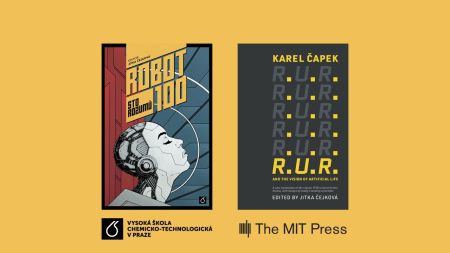
Books
- Čejková J. (ed.), ROBOT 100, Vydavatelství VŠCHT Praha, November 2020.
- Čejková J. (ed.), R.U.R. and the Vision of Artificial Life, MIT Press, January 2024.
- Artificial chemotaxis
- Chemobrionics
- Collective behaviour
- Liquid marbles
- Liquid robots
- Pattern formation
- Čejková J., Schwarzenberger K., Eckert K., Tanaka S. (2019), Dancing performance of organic droplets in aqueous surfactant solutions. Colloids and Surfaces A: Physicochemical and Engineering Aspects, 566, 141-147.
- J. Čejková, T. Ikegami F. Štěpánek, "Life-like swarm behavior of multiple chemotactic droplets ", Proceedings of the European Conference on Artificial Life 2017 (ECAL 2017).
- J. Čejková, T. Ikegami, "Experimental study of mutual interactions of multiple liquid droplets", Proceedings of the 2nd International Symposium on Swarm Behavior and Bio-Inspired Robotics (SWARM 2017).
Although the single droplet behaviour has been studied in detail already, the collective behaviour of decanol droplets has not been analysed yet and we focus on the description, how decanol droplets in decanoate solution interact between each other and how the presence of other droplets and environmental conditions influence their behaviour.
[urlnadstranka] => [ogobrazek] => [pozadi] => [poduzel] => stdClass Object ( [61443] => stdClass Object ( [nazev] => Research [barva_pozadi] => cervena [uslideru] => false [text] =>- Artificial chemotaxis
- Chemobrionics
- Collective behaviour
- Liquid marbles
- Liquid robots
- Pattern formation
- J. Čejková, M.M.Hanczyc, F. Štěpánek, (2018). Multi-Armed Droplets as Shape-Changing Protocells, Artificial Life, 24 (1), 71-79.
- Čejková J., Štěpánek F., Hanczyc M. (2016), Evaporation-induced pattern formation of decanol droplets, Langmuir 32, 4800-4805.
Pattern formation in far from equilibrium systems is observed in several disciplines including biology and reaction-diffusion chemistry, comprising both living and non-living systems. We aim to study such non-equilibrium dynamics of a novel system based on a 1-decanol droplet placed in a solution of alkaline decanoate. Recently, we have found that when the system is open to the environment and the evaporation of water from decanoate solution occurs we observe dramatic morphological changes of the decanol droplet. Moreover in the presence of sodium chloride it shows a novel type of pattern formation, namely the formation of long tentacular structures that we aim to analyse within present project at both the macroscopic and microscopic scale across a large range of initial conditions. Such reproducible morphological changes in simple droplets open a path for exploration of shape-based effects in larger scale pattern formation studies.
[urlnadstranka] => [poduzel] => stdClass Object ( [61443] => stdClass Object ( [nazev] => Research [barva_pozadi] => cervena [uslideru] => false [text] =>- Artificial chemotaxis
- Chemobrionics
- Collective behaviour
- Liquid marbles
- Liquid robots
- Pattern formation
- Janská P., Rychecký O., Zadražil A., Štěpánek F., Čejková J. (2019), Liquid oil marbles: increasing the bio-availability of poorly water-soluble drugs, Journal of Pharmaceutical Sciences, 108(6), 2136-2142.
- Čejková J., Rychecký O. (2017), Tekuté kuličky, Chemické listy 111, 109-114.
- Rychecký O., Majerská M., Král V., Štěpánek F., Čejková J. (2017), Spheroid cultivation of HT-29 carcinoma cell line in liquid marbles, Chemical Papers 71(6), 1055–1063.
A liquid marble is a liquid droplet encapsulated in a hydrophobic powder that adheres to the liquid surface. Liquid marbles preparation is very simple – a small amount of liquid is rolled on the layer of hydrophobic powder consisting of nano- or micro particles, which spread spontaneously at the interface liquid / air. This process results in a liquid marble formation that has some of the properties of a liquid droplet and at the same time it behaves as a soft solid. Liquid marbles are an alternative to superhydrophobic surfaces, because particles preventing the liquid to wet and contaminate the carrier surface which can be a solid or liquid surface. The present work focuses on the description of basic properties of liquid marbles and also gives an overview of the possible applications of liquid marbles, e.g. for transport of small volumes of liquids or powders in microfluidics, for the detection of gases or water contamination or as (bio)microreactors.
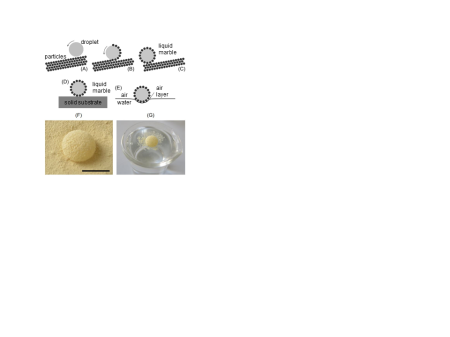
- Artificial chemotaxis
- Chemobrionics
- Collective behaviour
- Liquid marbles
- Liquid robots
- Pattern formation
Dictyostelium discoideum
- Čejková J. (2013), Dictyostelium discoideum – model system not only for biologists, Chemické listy 107, 563-600.
- Čejková J., Ševčíková H., Krausová L., Přibyl M., Štěpánek F., Marek M. (2010) A new traveling wave pattern of Dictyostelium in the presence of cAMP in the agar. Physica D 239, 879-888.
- Hilgardt C., Čejková J., Hauser M. J. B., Ševčíková H. (2008), Streamless aggregation of Dictyostelium in the presence of isopropylidenadenosin. Biophysical Chemistry 132, 9-17.
Dictyostelium discoideum is a microorganism that under normal conditions consists of independent single amoebas and under unfavourable conditions, these cells become “social” and enter a multicellular developmental program. After the initiation of starvation, pioneer cells release pulses of cyclic adenosine-3‘,5‘-monophosphate (cAMP). Nearby cells sense this compound and start to move chemotactically in the direction where the cAMP concentration rises most rapidly. By using chemotaxis, cells aggregate into multicellular object enabling them to survive unfavourable conditions.
Dictyostelium life cycle
Pattern formation in Dictyostelium
Temperature-sensitive PNIPAM microcapsules
- Čejková J., Hanuš J., Štěpánek F. (2010), Investigation of internal microstructure and thermo-responsive properties of composite PNIPAM/silica microcapsules. J. Coll. Interf. Sci. 346, 352-360.
Biologicaly triggered release
- Čejková J., Haufová P., Gorný D., Hanuš J., Štěpánek F. (2013), Biologically triggered liberation of sub-micron particles from alginate microcapsules, J. Mater. Chem. B 1, 5456-5461.
- Čejková J., Haufová P., Gorný D., Štěpánek F.: “Artificial spores” – hybrid alginate microcapsules with encapsulated yeast cells, ECAL 2013 (12th European Conference on Artificial Life), Taormina, Italy, 2.-6.9.2013.
A new method for triggering the burst liberation of encapsulated sub-micron particles from carrier particles using embedded microorganisms has been developed. Triggering mechanisms such as those based on chemical, light, thermal, or magnetic stimuli are known, but man-made particles are not yet able to replicate the concept of “dormancy” found in biological systems in the form of spores or seeds that survive in an inactive state and start to grow only once favourable environmental conditions are encountered. An engineered particle system that mimics this property by embedding viable yeast cells into synthetically made alginate microcapsules is reported in the present work. Cell growth and division is used as a triggering mechanism for stimuli-responsive release of the encapsulated content. The hybrid living/artificial capsules were formed by an inkjet printing process and the mechanism of biologically triggered release was shown using fluorescently labelled liposomes.
- Artificial chemotaxis
- Chemobrionics
- Collective behaviour
- Liquid marbles
- Liquid robots
- Pattern formation
Contact us!
Jitka Čejková
b
Department of Chemical Engineering
University of Chemistry and Technology, Prague
Technická 3, 166 28, Prague 6
Czechia
e
+420 220 444 460
Jitka.Cejkova@vscht.cz
- Artificial chemotaxis
- Chemobrionics
- Collective behaviour
- Liquid marbles
- Liquid robots
- Pattern formation

